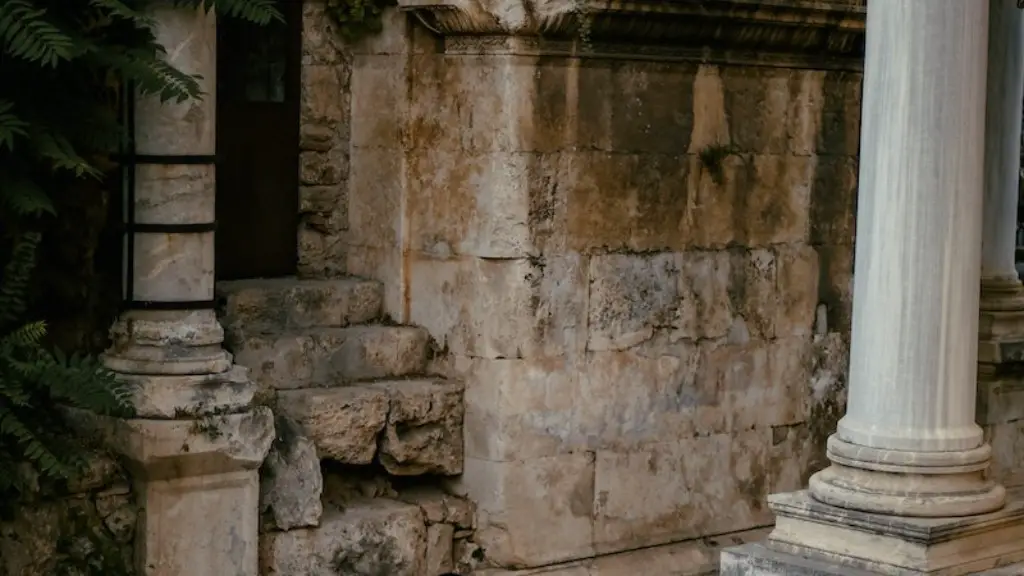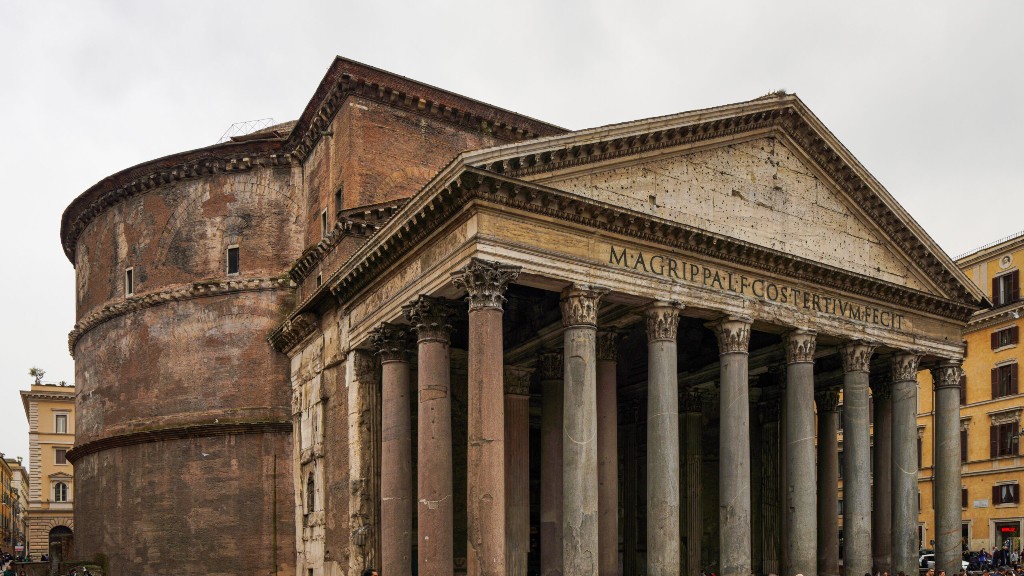Rome was a powerful and influential city during Ancient times. It was also home to a vibrant and versatile fashion culture, and shoes were an important part of this. There are numerous surviving examples of ancient Roman shoes that illustrate the craftsmanship, style, and design of the time.
It is likely that early Romans created and wore multiple types of shoes. Archeological evidence suggests that shoes of animal skin, cloth, and leather were used in Rome. Archaeological expeditions in and around Rome have uncovered several ancient shoe types.
The first type of shoe that was popular in ancient Rome was a sandal. It was usually made from leather and was designed to be lightweight and comfortable. It was usually secured to the foot with straps. These sandals provided the wearer with protection from sharp objects or uneven terrain and were very common in Ancient Greece and Rome.
Another type of shoe that was popular in Ancient Rome was the “calceus”. This shoe was made of leather and dye and had a distinctive, pointed toe. It was usually secured to the foot with buckles, ties, or laces. The calceus was an important footwear item for men of the upper classes, as it was used to signify status and power.
A third type of shoe that was popular in ancient Rome was the “solea”. This was a shoe with a sole made of leather and was typically associated with slaves and laborers. These shoes were very sturdy and durable, making them ideal for heavy labor. They were also comfortable, providing the wearer with protection from sharp objects and terrain.
The fourth type of shoe that has been found in Ancient Rome is the “soccus”. This was a light flat-sole shoe made of leather or cloth. It was designed for everyday wear and was popular with both men and women. The soccus was typically worn without socks and was often decorated with intricate stitching or embroidery.
The fifth type of shoe that was popular in Ancient Rome was the “boot”. This was a taller shoe made of leather or cloth and was usually worn by soldiers or farmers. The boot was designed to protect the foot from weather, rough terrain, and other potential hazards.
How Were Shoes Made in Ancient Rome?
The Roman Empire relied heavily on leather and textile production to produce shoes. The process of creating a pair of shoes would start with the selection of a hide. The hide was then soaked in brine and water and treated with oils. This process helped to soften and preserve the hide.
Next, the hide was cut into the shape of the shoe. This was done by hand, as machines were not used at the time. After the desired shape was achieved, the hide was carefully stitched together. Resourceful Romans often used a variety of materials to decorate and enhance the shoes, such as beads, pearls, and feathers.
The last step was to attach the sole to the upper portion of the shoe. This was usually done with glue made from beeswax, as well as thread and leather. Once the shoe was finished, it was ready for wearing.
What Was The Purpose of Shoes in Ancient Rome?
The purpose of shoes in Ancient Rome was both functional and symbolic. Shoes provided practical protection from the elements, as well as sharp stones and other debris. At the same time, shoes were used to signify wealth, status, and power. Wealthy Romans would often display their wealth by wearing elaborate and expensive shoes, while those in the lower classes would wear simpler and more basic shoes.
Shoes were also viewed as a fashion accessory. Ancient Romans would often wear brightly colored and intricately stitched shoes to special occasions. This served to enhance their appearance and indicate their social standing.
What Was It Like To Live In Rome Without Shoes?
Living in Rome without shoes was difficult, particularly for those in the lower classes. Those who could not afford shoes would typically wear sandals or no shoes at all. This made the everyday tasks of walking and working difficult and dangerous, as the individual’s feet could become easily injured by sharp objects on the ground.
At the same time, being without shoes also meant that an individual’s place in society was lower. Shoes served as a symbol of wealth and power, and without them an individual was unable to gain access to certain areas or participate in certain activities.
Romans And The Wearing Of Shoes Today
Modern society has taken many cues from Ancient Rome when it comes to fashion and style. Shoes remain a prominent accessory and signifier of wealth and status today, although the materials and designs have changed over the years. Shoes are now made from a variety of materials, including canvas, leather, rubber, and synthetic materials. Designer shoes continue to be highly sought after, and those in the upper classes often flaunt their wealth with elaborate and luxurious footwear.
Role of Shoes in Ancient Roman Culture
In Ancient Rome, shoes were a prominent part of everyday life. They served a practical purpose, providing protection from the elements and sharp objects. They also served as a symbol of wealth and power, with members of the upper classes displaying their affluence with elaborately decorated and expensive shoes. Shoes continue to play an important role in today’s culture, although the materials, designs, and meanings have evolved over time.
Conclusion
Ancient Roman shoes were both practical and symbolic. They were designed for comfort and protection, as well as to signify wealth and power. Numerous types of shoes were popular at the time, from sandals to boots. The craftsmanship and design of these shoes were impressive, and they remain a source of inspiration for modern fashion designers. The purpose and meaning of shoes have evolved over the years, but their importance in everyday life remains the same.




